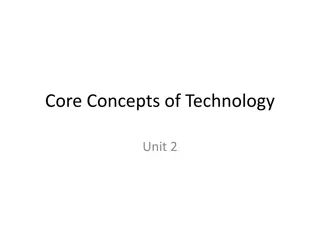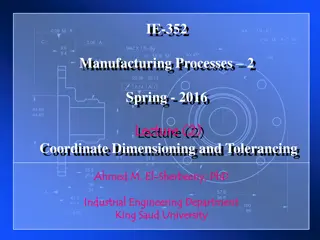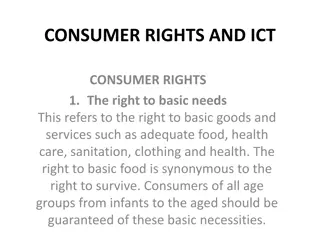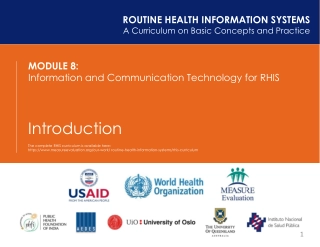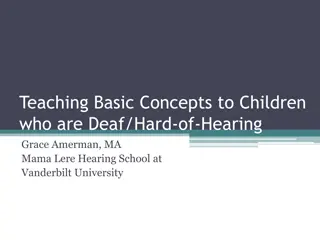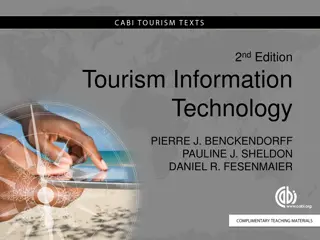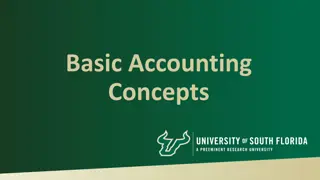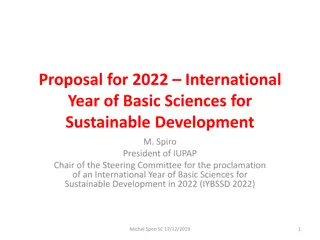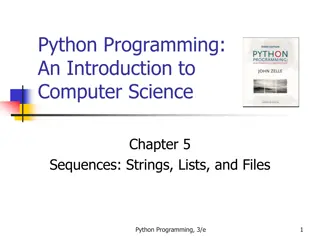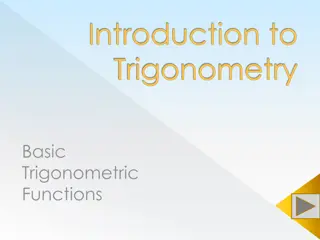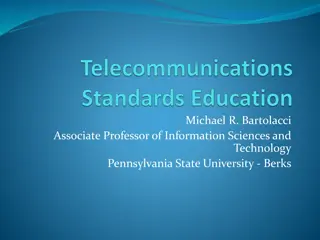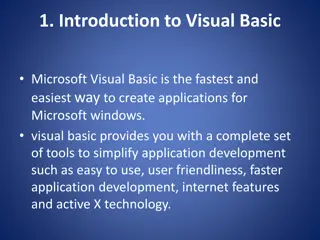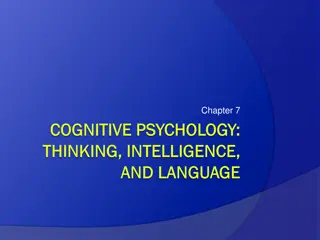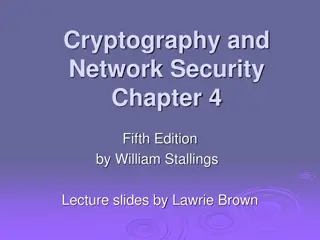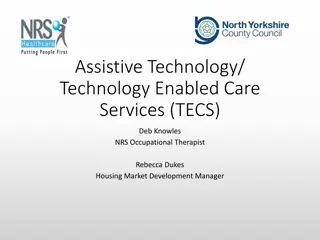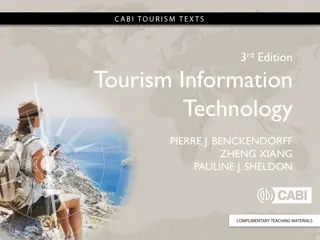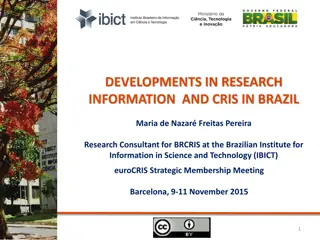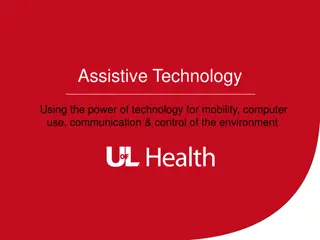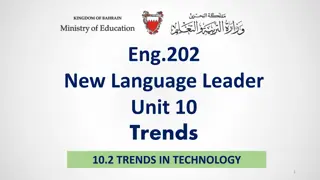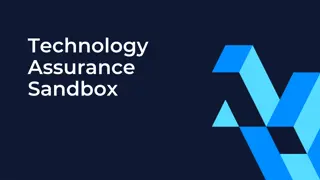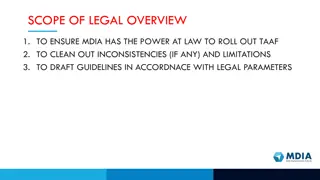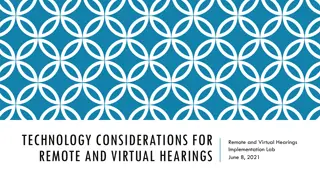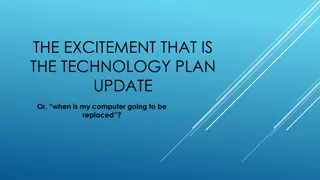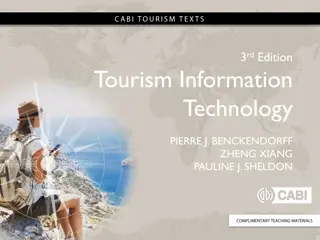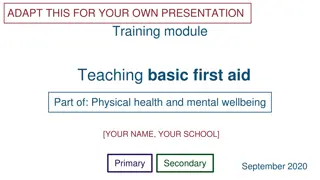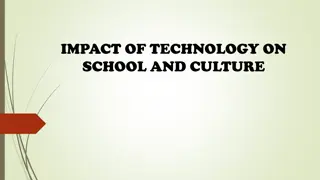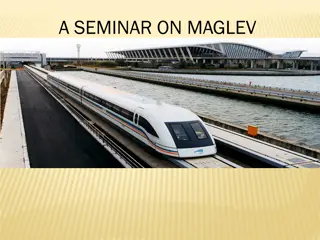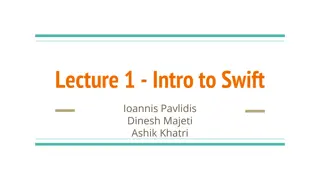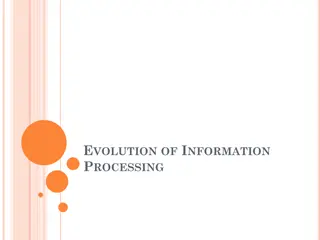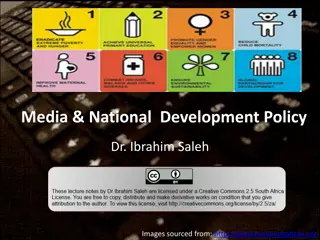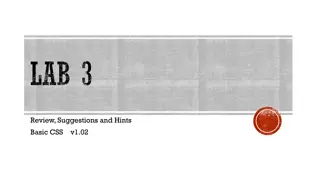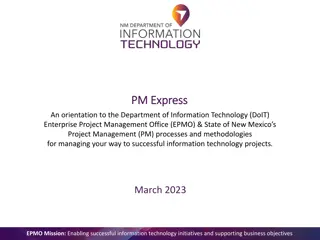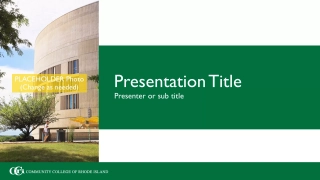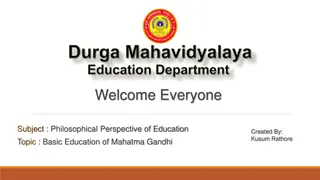Understanding Basic Concepts of Information Technology
An overview of information technology covering hardware components like keyboard, monitor, mouse, CPU, HDD, SSD, RAM, and more. Learn the fundamentals of computers, input/output, software, and the main parts of a PC. Explore the role of IT in processing data, converting it into valuable information, and communication technology. Dive into the significance of memory storage devices like hard disk drives and solid-state drives in computer systems.
Download Presentation

Please find below an Image/Link to download the presentation.
The content on the website is provided AS IS for your information and personal use only. It may not be sold, licensed, or shared on other websites without obtaining consent from the author. Download presentation by click this link. If you encounter any issues during the download, it is possible that the publisher has removed the file from their server.
E N D
Presentation Transcript
Computer Laboratory Computer Laboratory Lecture 1 Lecture 1 Basic Concepts of Information Technology Basic Concepts of Information Technology 11/28/2022 Basic Concepts of Information Technology, Lecture 1 1
Computer A computer is an electronic device used to process data, converting data into information that is useful to people. Input Output Hardware refers to the physical components of a computer. Software refers to the programs that control the computer and make it function. Information Technology is a broad term which covers all aspects of the use of computer technology. It includes not only hardware and software, but also communication technology applied to linking computer systems, software engineering, and the administration and use of computer systems. 11/28/2022 2 Basic Concepts of Information Technology, Lecture 1
Lesson 2 Main Parts of a PC Hardware: These are the parts that you can see, feel and hear. Keyboard Monitor Mouse Case/Box CPU HDD (Hard Disk Drive) SSD (solid State Drive) RAM (Random Access Memory) CD-ROM Drive Power supply Speakers LAN card, WLAN card, Modem Cables 11/28/2022 Basic Concepts of Information Technology, Lecture 1 3
Lesson 2 Main Parts of a PC Keyboard It is used to enter information in the computer. Its like a board having Keys (buttons) Mouse It is used to operate or control the computer. When mouse is moved then a cursor is moved on the computer screen. With mouse we can select menu options, drag & drop and point & click. 11/28/2022 Basic Concepts of Information Technology, Lecture 1 4
Lesson 2 Main Parts of a PC Monitor / VDU (Video Display Unit) It is used to view information or results from the computer. Monitors are of many sizes and qualities. LEDs, LCDs are new shapes of monitors. System Unit/Case/Box It is a plastic or metal box. Box has many other parts of the computer like CPU, Motherboard, Hard disk, CD-ROM. Box may be Tower-top or Desk-top. 11/28/2022 Basic Concepts of Information Technology, Lecture 1 5
Lesson 2 Main Parts of a PC Hard Disk Drive (HDD) Hard disk is inside the computer box. It is used to store data and programs. Hard disk may be external or internal. Solid State Drive (SSD) A solid-state drive is a storage device that uses integrated circuit to store data persistently and functioning as secondary storage in the hierarchy of computer storage. Also, we have Memory sticks/Flash drive. 11/28/2022 Basic Concepts of Information Technology, Lecture 1 6
Lesson 2 Main Parts of a PC CD-ROM Drive (CD-ROM) or DVD-ROM Drive (DVD-ROM) CD or DVD is used to read information. CD or DVD may contain computer software, data or music. We can also rewrite data/information on rewriteable CDs and DVDs. Speakers Speakers are used to play music or any audio. There are many types of speakers. 11/28/2022 Basic Concepts of Information Technology, Lecture 1 7
Lesson 2 Main Parts of a PC Modem Modem is used to connect to internet via a telephone line. Modem can be internal or external. 11/28/2022 Basic Concepts of Information Technology, Lecture 1 8
Lesson 2 Main Parts of a PC LAN (Local Area Network) LAN is a computer network that interconnects computers within a limited area such as a residence, school, laboratory, university campus or office building. LAN is used to connect to internet. LAN card can be internal or external. 11/28/2022 Basic Concepts of Information Technology, Lecture 1 9
Lesson 2 Main Parts of a PC WLAN (Wireless Local Area Network) WLAN is a computer network that interconnects computers wirelessly within a limited area such as a residence, school, laboratory, university campus or office building. WLAN is used to connect to internet. WLAN card can be internal or external. 11/28/2022 Basic Concepts of Information Technology, Lecture 1 10
Lesson 1 Types of Computer Types of Computers Computers are of following types: Personal Computer Laptop computer Handheld Devices PDA Mobile Phones & Smart phones Multimedia Players Networked computer Server Mainframe computer Super-computer 11/28/2022 Basic Concepts of Information Technology, Lecture 1 11
Lesson 1 - Types of Computers Personal Computer In General, the term Personal Computer PC is used for any computer the user familiar with. Also sometimes called desktop. Operating systems such as Linux and Windows were designed specifically for personal computers. A typical PC consists of a main unit housing the CPU and disk drives, a VDU (Video Display Unit), a keyboard and a mouse. can be used for thousands of different tasks from creating a simple document to controlling a large industrial machine. PC is cheap and easy to use. PC is normally used by students, families and in small businesses. 11/28/2022 Basic Concepts of Information Technology, Lecture 1 12
Lesson 1 - Types of Computers Laptop Computer Similar to personal computers except that they comprise an integrated unit A laptop is a small computer which can be easily carried in a small bag/case In laptop, batteries are used for power. Laptop has keyboard and a touchpad. It is expensive than PC. Laptop is almost equal in speed of a PC. It is normally used by business people, students, and etc. 11/28/2022 Basic Concepts of Information Technology, Lecture 1 13
Lesson 1 - Types of Computers Handheld Devices Personal Digital Assistant (PDA) It is a small computer which can be placed on the palm of hand. It has touch screen where we can use finger or digital pen. It can be used as a phone, Media Player, for internet. It is also used by businessmen. Mobile phones & Smart Phones These are advanced phones with latest functions. We can use them as a phone and as a computer to use some software. 11/28/2022 Basic Concepts of Information Technology, Lecture 1 14
Lesson 1 - Types of Computers Multimedia Players These players can play and view many types of media files e.g. video, music and photos. Example is Apple iPod We can connect these players to internet or other network. 11/28/2022 Basic Concepts of Information Technology, Lecture 1 15
Lesson 1 - Types of Computers Network Computers A network is a collection or group of computers connected with each other via cables or wireless. A network is used to share resources and information. Network is used in large organisations, schools, hotels and offices. 11/28/2022 Basic Concepts of Information Technology, Lecture 1 16
Server Purpose is to serve. A computer that has the purpose of supplying its users with data; usually using a LAN (local area network). 17 Basic Concepts of Information Technology, Lecture 1 11/28/2022
Lesson 1 - Types of Computers Mainframe Computers These are very big, powerful and very high speed computers. They can do multiple tasks at high speed. These are used by large organisations such an banks to control the entire business operation. These are very expensive. They are placed in a big room. 11/28/2022 Basic Concepts of Information Technology, Lecture 1 18
Supercomputer A computer that was the fastest in the world at the time it was constructed. Can tackle tasks that would not be practical for other computers. Typical uses Breaking codes Modeling weather systems Modeling Chemical reactions 11/28/2022 Basic Concepts of Information Technology, Lecture 1 19



